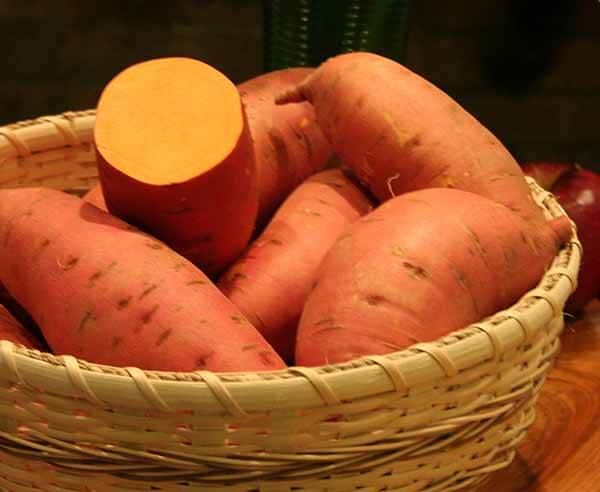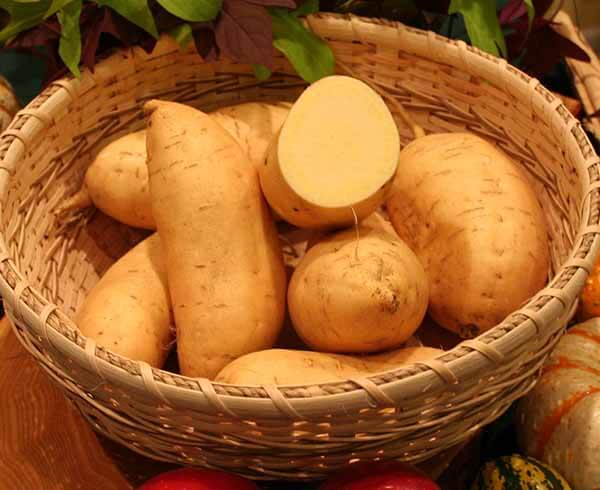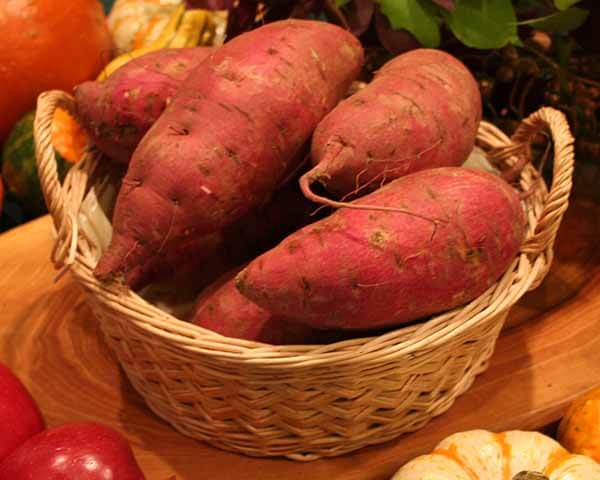
What’s the Difference Between a Sweet Potato and Yam?
30 August 2021If you think yams are sweet and orange – read on to find that orange is the new potato.
By North Carolina Sweet Potatoes
What’s in a name? When it comes to the yam, a bit of confusion. Perhaps what you’ve been calling a yam is most likely a sweet potato. Even more, it’s possible most culinary students have never tasted a yam.
That sweet, orange-colored root vegetable is actually a sweet potato. Yes, all so-called yams are sweet potatoes. Most people think that long, red-skinned sweet potatoes are yams, but they are really just one of many sweet potato varieties. So where does the confusion originate? Here is a breakdown of the main differences between yams and sweet potatoes.
Yam vs. sweet potato
A true yam is a starchy edible root of the Dioscorea genus and is generally imported to America from the Caribbean, although it originally hails from Africa. It is rough and scaly and very low in beta carotene.
Depending on the variety, sweet potato flesh can vary from white to orange and even purple. The orange-fleshed variety was introduced to the United States several decades ago. In order to distinguish it from the white variety everyone was accustomed to, producers and shippers chose the English form of the African word “nyami” and labeled them “yams.”
Today the U.S. Department of Agriculture requires labels with the term ‘yam’ to be accompanied by the term ‘sweet potato.’ Despite the label regulations, most people still think of sweet potatoes as yams regardless of their true identity.
Think you know the differences between yams and sweet potatoes? Test your root knowledge and take a quiz. Better yet, try this quiz with your culinary students. The answers can be sweet potato, yam or both.
- I am a tuberous root with sweet, moist flesh.
- I am originally from Africa and seldom sold in U.S. markets.
- I can grow over seven feet in length.
- My skin can range from thin and pale to dark and thick.
- I am toxic when eaten raw, but perfectly safe when cooked.
- I have rough skin that is difficult to peel and can even be hairy at times, but it softens when baked.
- My flesh can sometimes be purple.
- I have an oblong body with tapered ends.
Answers
- Both. Sweet potatoes and yams are considered tuberous roots, and both are sweet and delicious.
- Yam. Yams grow in tropical climates, primarily in South America, Africa and the Caribbean.
- Yam. They can grow to be enormous.
- Sweet potato. Pale-skinned sweet potatoes have white flesh which is not as sweet and moist as the darker-skinned, orange-fleshed sweet potatoes.
- Yam. Unlike sweet potatoes, yams must be cooked to be safely eaten. Preparation is a time-consuming process involving several minutes of pounding and boiling to remove toxins.
- Yam. Sweet potato skin is thinner and smoother.
- Both. Purple Okinawan sweet potato is often confused with the purple yam called ube.
- Sweet potato. It can be short and fat or long and thin, but it will always taper at the ends.
The table below contains more yam and sweet potato comparisons:
|
Sweet potato |
Yam |
|
|
Taste |
Sweet potatoes are almost always sweeter than yams. They have versatile flavors easily altered by cooking methods. |
Starchier and more potato-like, usually not very sweet. Versatile; flavor easily altered by cooking methods. |
|
Appearance |
In the U.S., the majority of sweet potatoes sold are one of four appearances: · Rose color skin with orange flesh · Pale copper/tan skin with white flesh · Red skin, dry white flesh · Purple skin and flesh
|
Varies considerably. Some yams are the size and shape of small potatoes; others can grow up to 5 feet in length and weigh over 100 pounds. Skins may be dark brown or light pink; insides are white, yellow, purple, or pink. |
|
Nutrition |
Very nutritious. Has more sugar, protein, calcium, iron, sodium, vitamin A, beta-carotene, and water than yams. |
Very nutritious. Has more fat, carbs, fiber, potassium, vitamin C, vitamin B6, and vitamin E than sweet potatoes. |
|
Production |
In the U.S., over 50 percent of the country’s sweet potatoes are grown in North Carolina. |
Yams are grown around the world, but West Africa is still where most yam crops — nearly 95 percent— are grown. |
Varieties of sweet potato
There are hundreds of sweet potato types ranging from white and mild to deep red and super sweet. Many are grown in small quantities and can be found at local farmers markets. North Carolina sweet potatoes are available throughout the year. When selecting sweet potatoes, it is important they are firm to the touch and show no decay signs.
The following are three popular sweet potato varieties found in grocery stores nationwide. Depending on flavor and texture, certain sweet potato varieties better lend themselves to certain recipes. Click here to see recipes and learn the ABCs of cooking with sweet potatoes.
 Covington sweet potato
Covington sweet potato
A favorite for mashing or roasting, the Covington sweet potato has rose-colored skin and super sweet-orange flesh. Eat it whole with your favorite toppings or cut into wedges and bake as a side dish.
 O’Henry white sweet potato
O’Henry white sweet potato
The O’Henry white sweet potato has pale copper skin, almost like a potato, but don’t be fooled. This tater’s white flesh is sweet, creamy and ideal for soups and stews.
 Japanese sweet potato
Japanese sweet potato
Japanese sweet potatoes have red skin and dry, white flesh. Roast these with a few of your favorite root veggies for a colorful side dish.
Many types of sweet potatoes are grown in North Carolina. Although some are grown for special uses, the majority are the orange-fleshed, moist, sweet varieties that are widely accepted in the fresh market and for processing. The list of sweet potato varieties changes rapidly and new varieties with superior qualities are released almost annually. Each variety has certain advantages and disadvantages.
Storage techniques
Follow proper storage procedures to prevent sweet potatoes from bruising or spoiling.
Avoid storing the root vegetable in the refrigerator, which will produce a hard center and unpleasant taste. Instead, store the sweet potato in a cool, dry, well-ventilated container. For best results, store them in a basement or root cellar away from strong heat sources. They can stay fresh up to two weeks if stored properly.
Photos courtesy of North Carolina Sweet Potatoes.
